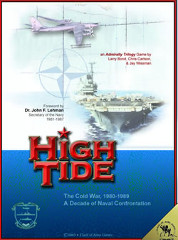Games
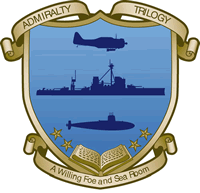
The Admiralty Trilogy
Larry Bond is the designer of the Admiralty Trilogy games. Larryís Harpoon gaming system was first published in 1980. Designed as a general-purpose air, surface, and submarine naval simulation, it combines playability with a wealth of information on modern naval weapons systems. Designed for the entry-level player, it has found acceptance in both the commercial market and the professional naval community. It is used at the Naval Academy, several ROTC installations, and on several surface ships as a training aid.
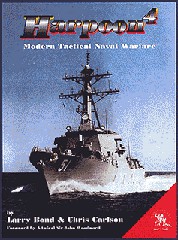
Modern Era: Harpoon 4
with Chris Carlson
Harpoon 4, by Larry Bond and Chris Carlson, handles all aspects of maritime combat: surface, sub-surface, and air. Harpoon 4 is a system of detailed but comprehensible rules covering the many facets of modern naval actions. Consistent rating systems and evaluations of the capabilities of modern naval vessels, aircraft, submarines, and helicopters make it possible to achieve realistic results when simulating known situations, by extension Harpoon 4 also achieves realistic results with hypothetical scenarios.
There is also a Player's Handbook available from Clash of Arms.
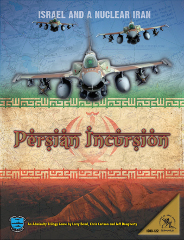
Persian Incursion
Persian Incursion explores the consequences of an Israeli campaign against Iran, modeling political, military and intelligence actions by both sides. It combines rules adapted from the award-winning Harpoon tactical game with a card-based diplomatic/political component. Players spend Political, Intelligence and Military Points to influence allies or enemies, purchase reinforcements, execute military strikes, or shape their own domestic opinion. Players choose variable starting conditions that shape scenarios, while random strategic events influence play in unexpected ways.
- Persian Incursion provides:
- Operational and tactical rules for air strikes and intercepts by fighters and surface-to-air missiles
- Orders of Battle for the Israeli and Iranian Air Force and the Iranian Air Defense Force
- Analysis of the Iranian nuclear and oil infrastructure
- Iranian ballistic missiles and Israeli ballistic missile defenses
- Target folders for Iranian nuclear facilities, oil terminals and refineries, and airfields
- Variable starting conditions modeling different political situations
Persian Incursion is not a balanced game. We honestly don't know if the Israeli or Iranian player has the advantage. That's one reason for writing the game. It tries to answer the same questions real-world planners are asking: What are the odds of it working? Is it easy or hard? And what are the costs - to the attackers, the defenders, and everyone else on the sidelines?
- Game components include
- Rule book
- Briefing Booklet
- Target Folders
- Israeli and Iranian card decks
- Air Data cards
- Game Map
- Counters
- Dice
Facts sheet
Larry Bond and Jim de Felice talk about the game: (wmv)
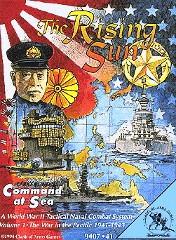
World War II: Command at Sea
Command at Sea is the second game of the Admiralty Trilogy, and is an adaptation of Harpoon to the WW II era. Like Harpoon, it emphasizes both playability and historical accuracy, drawing on many contemporary sources. The first volume of this game is The Rising Sun, which focuses on the war in the Pacific 1941-43.
There is also a Player's Handbook available from Clash of Arms.
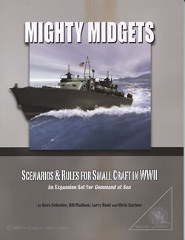
Volume 5: Mighty Midgets
Naval warfare isnít always about large-scale conflict between giant ships. This Command at Sea module features small craft actions, with several modifications to accommodate their capabilities and weaknesses. This proves yet another testament to the Harpoon game systemís flexibility.
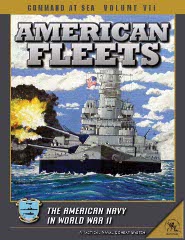
Volume 8: American Fleets
For the first time statistics for US ships and aircraft, and all their weapons and sensors are available in Command At Sea 4th Edition standard. American Fleets includes over 250 ship classes and over 190 aircraft, many of which have not appeared in print before. All earlier listings for these ships and aircraft have been reviewed and updated to include information from newly available references, and great strides have been made in reconciling conflicting or incorrect sources. Damage data and other game-related information has also been updated to the Command At Sea 4th Edition standard. More than making the information compatible with Command At Sea, the data is now in the same format and uses the same standards as Harpoon and Fear God & Dread Nought, the other core games in the Admiralty Trilogy.
All ships and aircraft extant from 1939 to late 1945, including several projected and/or hypothetical platforms are also here, such as the first South Dakota (BB-49) and the P-75 Eagle. Late or post-war platforms include the Montana and Midway classes, as well as the P-80C Shooting Star and the B-32 Dominator.

Volume 9: Emperor's Fleet
Emperor's Fleet provides statistics for the Japansese ships and aircraft, and all their weapons and sensors, extant in the Second World War.
Over 200 ship classes and over 130 aircraft are included, many of which have not appeared in print before. All earlier listeings for these ships and aircraft have been updated to include information from newly available references, and great strides have been made in reconciling conflictting or incorrect sources.
Damage data and other game-related information has also been updated to the Command at Sea 4th edition standard. More than making the information compatible with Command at Sea, the data is now in the same format and uses the same standards as Harpoon and Fear God & Dread Nought, the other core games in the Admiralty Trilogy.
All Japanese ships and aircraft extant from 1939 to late 1945, including several projected or hypothetical platforms are also here, such as the Tosa class battleship, cancelled after ther Washington Treaty. A detailed listing of Japanese merchant ships is included. Late or post-war platforms include the Ibuki and B64 and B65 classes, as well as the A7M Reppu and the Ki.94 interceptor.
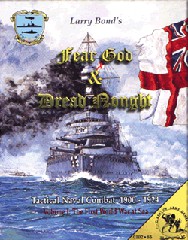
World War I: Fear God & Dreadnought
Fear God & Dreadnought extends the game system back to World War I, allowing players familiar with the system to play any naval battle of the Twentieth Century. Emphasizing playability as well as scrupulous historical accuracy, research for the game has involved many of the best naval historians in the world.
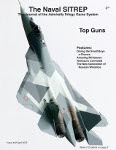
The Naval SITREP
Published first by the Viking Forge and then Clash of Arms, The Naval SITREP has been published continuously since October of 1994. It supports all three tactical naval games of the Admiralty Trilogy: Fear God & Dread Nought, Command at Sea, and Harpoon. Offering scenarios, statistics on new weapons, and articles on all aspects of naval warfare, it is currently published twice a year.
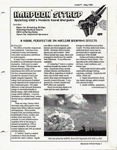
The Harpoon SITREP
Published by now-defunct Game Designerís Workshop from January 1989 to January 1994, The Harpoon SITREP supported the Harpoon tactical naval miniatures game with scenarios, updates on naval developments, articles on naval technology and rules expansions and clarifications. Twenty issues were published before the publication ended to make way for The Naval SITREP. While individual issues are out of print, The Best of the GDW SITREP collects the articles of lasting value in a single volume. It is available from Clash of Arms.
